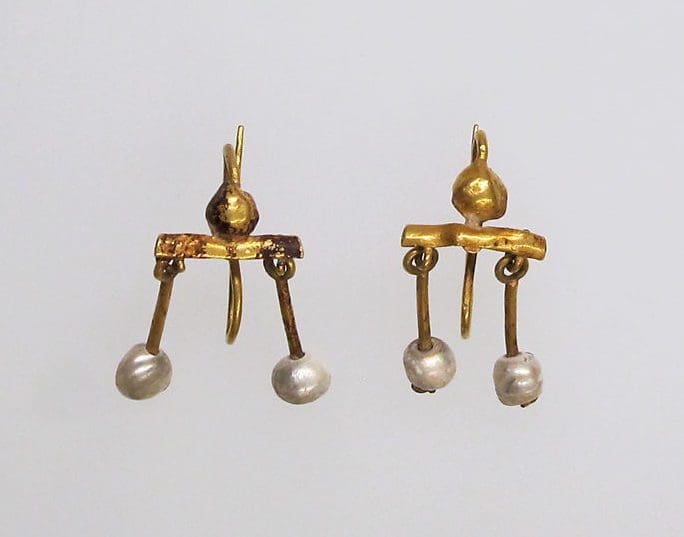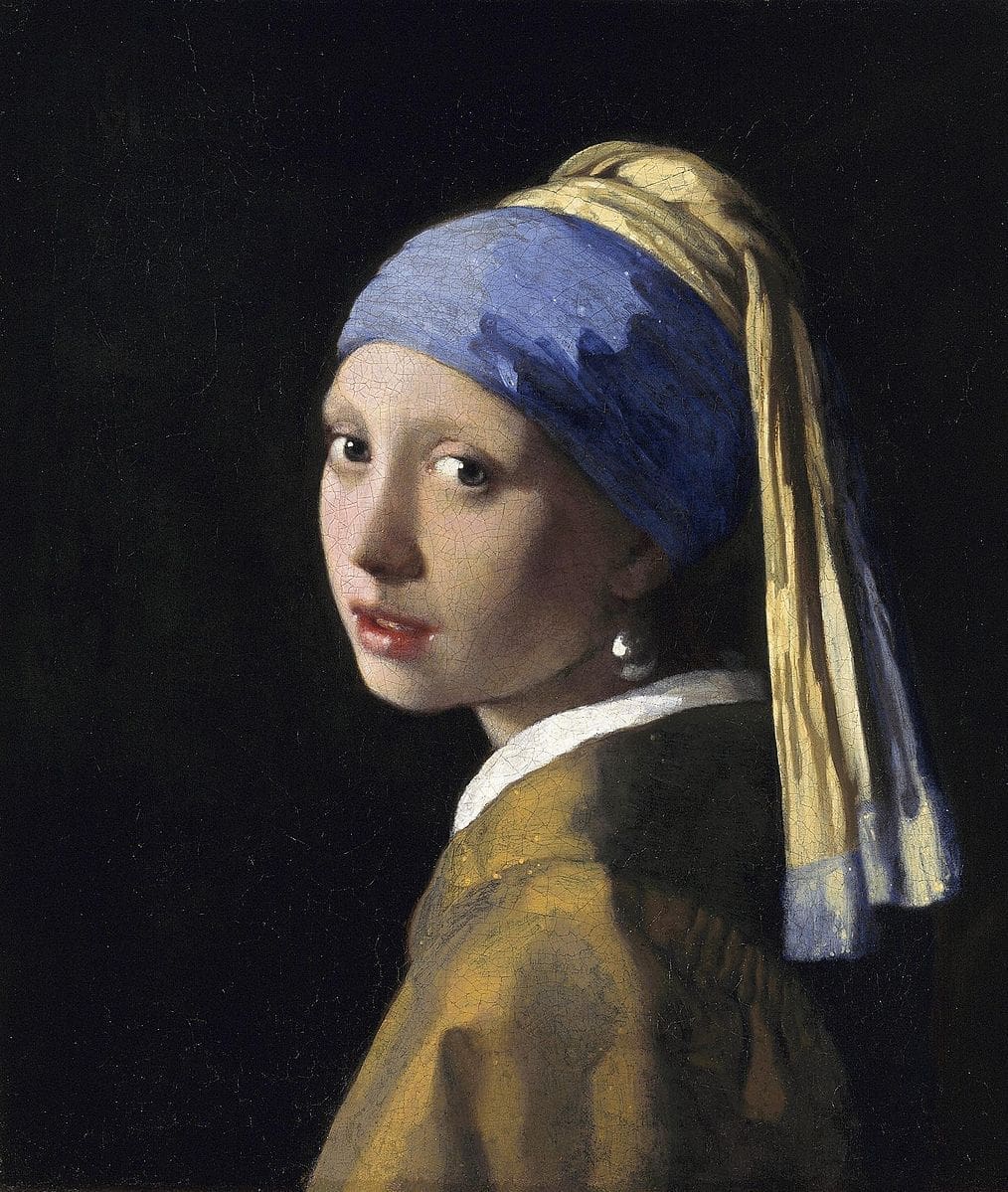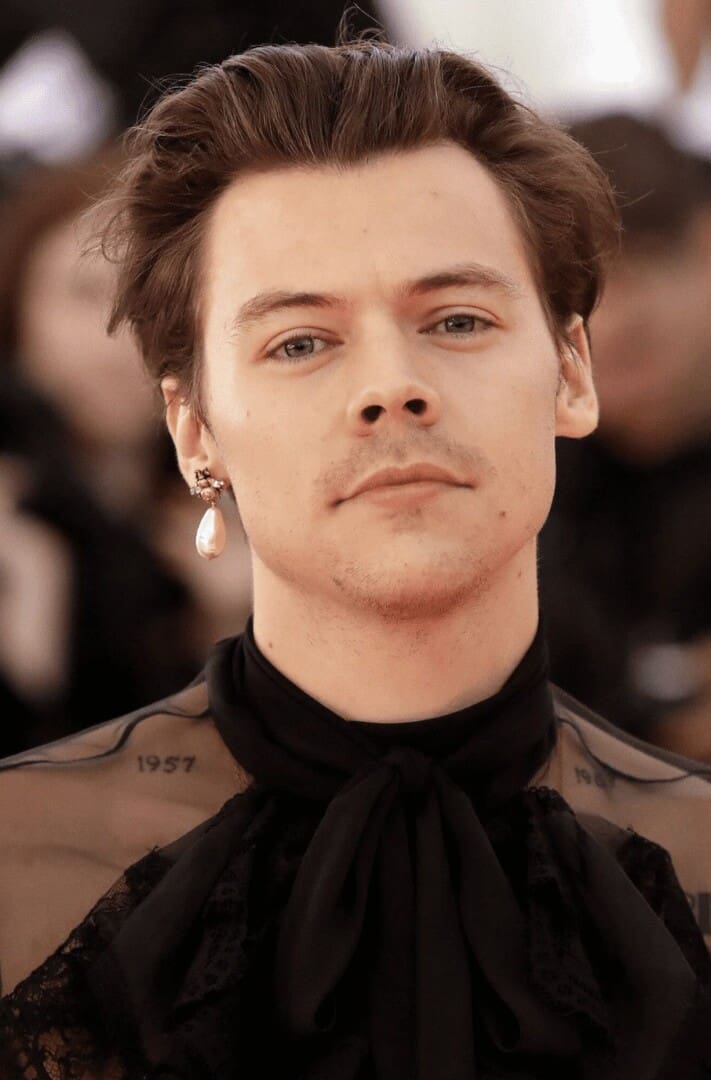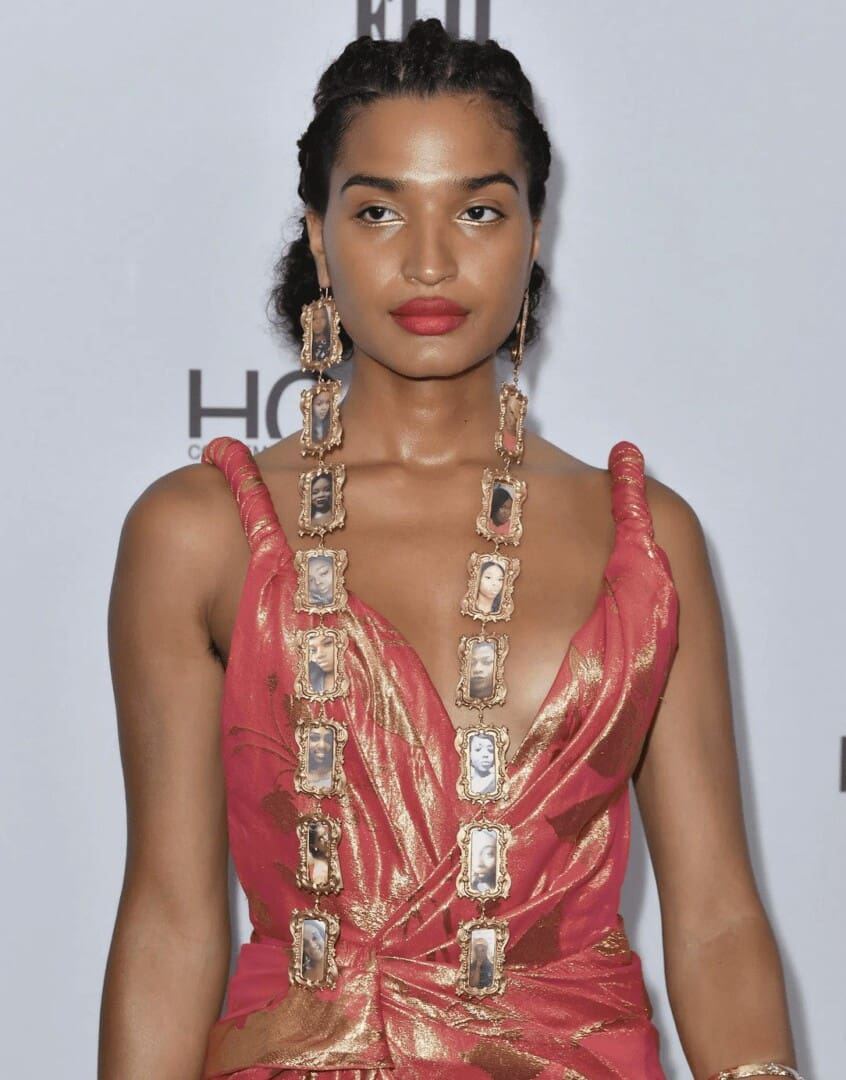Ears have long been the perfect place on the body for earrings. Since the dawn of time, humans have found ways to adorn their bodies, and earlobes, along with the ear’s many other enticing curves and crevices have been irresistible to makers and wearers alike.

A medallion painting from the House of Marcus Fabius Rufus in Pompeii, Italy, depicting the goddess Venus. She is adorned with earrings of twin pearls similar to those found at Pompeii and Herculaneum.
While many think that earrings are a modern invention, earrings were mentioned in the Bible, and they were worn by women, men, pirates, and even slaves. Earrings can be made of almost any material, from metal and plastic, to feathers, bone, shells, wood, and even pebbles. The only limiting factors are size and weight in relation to the body, and sometimes even these parameters are ignored in the pursuit of a particular look, message, or heightened sense of beauty.

Gold and pearl earrings, Roman, 1st century A.D., H.: 1 1/8 in. (2.9 cm). Metropolitan Museum of Art.
The pleasures of dangling earrings were described in the first century AD [OR new term: CE for the Common Era] when the Roman historian Pliny the Elder mentioned their popularity among both rich and poor: “Our ladies quite glory in having . . . two or three of them dangling from their ears . . . for after inventing these ear-rings, they have given them the name
of ‘crotalia,’ or castanet pendants, as though quite delighted even with the rattling of the pearls as they knock against each other; and now, at the present day, the poorer classes are even affecting them, as people are in the habit of saying, that ‘a pearl worn by a woman in public, is as good as a lictor [an official attendant] walking before her.’”

Johannes Vermeer (1632-1675), Girl with a Pearl Earring, ca. 1675. Oil on canvas. Mauritshuis
Of course, pearls have lost none of their appeal since the days of Pliny the Elder. Johannes Vermeer’s celebrated Girl with a Pearl Earring of 1665 only seems to have grown in popularity with novels and films dedicated to its
elusive subject in recent years. And while one scholar recently suggested that the pearl was actually the reflection of a metal disc, it remains that Vermeer’s luminous pendant is a perfect balance for the large eyes and features of his female subject. The ideal pearl is round and smooth, but elongated and irregular baroque forms lend even more interest. And if you think pearls were only for women, have a look at the gem-set, teardrop-shaped pearl pendant earring worn by singer Harry Styles to the Met Gala in 2019. [link]

Harry Styles at the 2019 Met Gala in NYC. Photo Andrew Kelly/Reuters
And Harry is not alone. Earrings have become newly-fashionable for men, after a long hiatus in Western culture when jewelry was made almost exclusively with women in mind. Men wore earrings in the prehistoric world, as was documented in the case of Otzi the Iceman, who died 5300 years ago and was found with stretched earlobes. During the English Renaissance, William Harrison, author of the Description of England (1577) noted that “some lusty courtiers and gentlemen of courage do wear either rings of gold, stones or pearls in their ears.” The advent of earring-wearing hippies and gay men have only accentuated the trend such that today, it seems that more men than ever are wearing earrings or ear spools, the latter made by stretching the earlobe, just as the ancient Egyptian and pre-Columbian cultures did before them.
Diamonds did not become popular until the 13th century, when people first learned how to cut them in order to reveal their brilliance. The less costly version was known as paste, or what we call costume jewelry, a general term for leaded glass that was cut and often foil-backed in imitation of stones. Whether diamond, paste, pearl, gold, or coral, by the seventeenth century most earrings were designed in the fashionable girandole style that called for pendants grouped in clusters of three.

Girandole earrings, diamonds, silver. Nineteenth century. Source unknown
By the twentieth century, the world of jewelry changed dramatically with the onset of the arts and crafts movement. For the first time, a higher value was placed by artists on color or composition over the precious materials used to make them. For this reason, artists chose colored stones such as opals, lapis lazuli, and carnelian. Others began to work in enamel to create an unusual range of tones, as in this peacock-colored pair of earrings by the English and German firm Murrle, Bennett and Co.

Murrle, Bennett & Co. (1884-1916). Earrings, c. 1900. Silver, enamel. Courtesy Tadema Gallery
Fifty years later, a new group of individuals arose to express values that aligned with the arts and crafts movement. They preferred common materials such as wood, stone, and even modern plastics to precious stones. Those studio jewelers are the antecedents of today’s contemporary jewelers and they valued design and content over the allure of costly commercial goods.
These artists felt a new freedom to ornament the body. Russian immigrant and artist Irena Brynner emigrated to the United States and came to the realization that jewelry was a form of body sculpture. She acted upon this knowledge with a novel earring design produced in the lost wax process that surrounded the entire ear with a delicate filigree of gold

Irena Brynner (b. Russia, 1917–2003), Earrings, 1967. 18k gold; lost wax cast, forged. Museum of Arts and Design, New York; gift of the Johnson Wax Company, through the American Craft Council, 1978, Object number: 1978.3.2 a,b
Earrings are without a doubt the most popular accessory for the body today, as is evident in a cursory look at the marketplace. Artists continue to push the boundaries of the form, seeking new ways in which to use the ear for bold visual statements, social commentaries, and identity politics. One notable example of the latter was worn by the transgender actor and model Indya Moore. The waist-length earrings they modeled were made by Brooklyn artist Areeayl Goodwin, and featured portraits of 17 Black trans women murdered in the United States in 2019.

Indya Moore in custom Areeayl Goodwin on the Fashion Media Awards carpet, 2019. (Image courtesy of Vogue Magazine.)
These difficult works make one pause for breath in a world that can be cruel. They also make one grateful for a generation of contemporary artists who have the agency to speak their truth through jewelry. Next time you want to say something with jewelry, hang it on your ear.

About the author:
Jeannine Falino has been involved with SA+C since she was the Peter and Carolyn Lynch Curator of American Decorative Arts and Sculpture at the Museum of Fine Arts in the 1990s. Now a resident of New York, Jeannine is a private curator and art historian with a long list of acclaimed exhibitions and books to her credit.
She curated Crafting Modernism: Mid-century American Art and Design, and What Would Mrs. Webb Do? A Founder’s Vision for the Museum of Arts and Design in New York. In addition to curating and writing, Jeannine teaches at the Rhode Island School of Design and Parsons. A graduate of Providence College and Boston University, she serves on the steering committee of the New York Silver Society and the Friends of American Art at Yale. At SA+C she has worked on programming and is currently chairing the Governance committee. https://societyofcrafts.org/about-us/board-staff/


